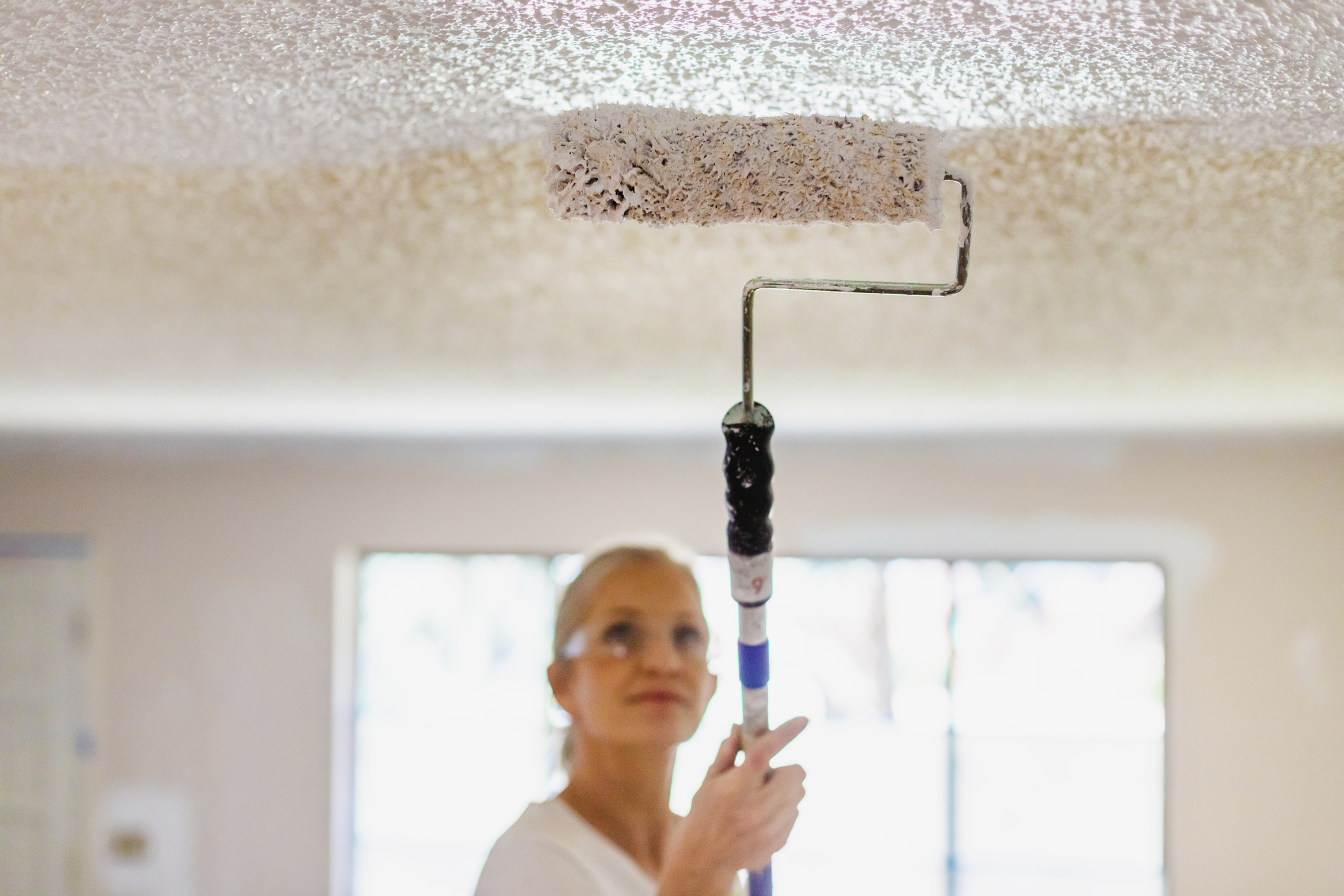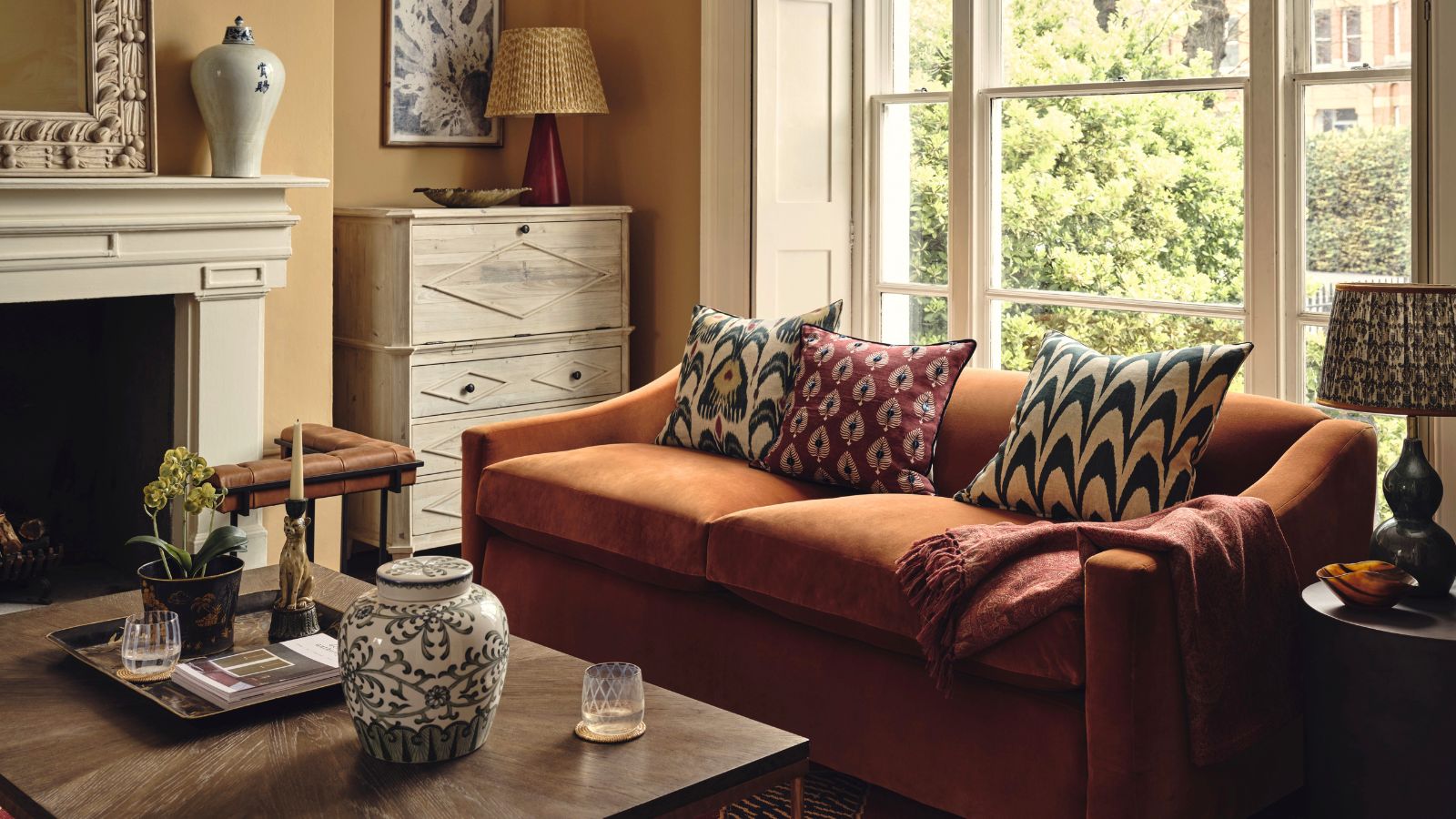How to texture a ceiling
Want to learn how to texture a ceiling? Whether a confident DIY-er or not, here’s everything you need to know


While the past few years has seen a shift away from textured ceilings, there’s no denying the many benefits this unique finish can provide. Whether it’s acoustic improvements, disguising imperfections or simply adding interest to an otherwise forgotten surface, texture has been creeping out of obscurity and well and truly into the interiors spotlight.
Of course, it may be the case that you are repairing rather than removing a popcorn ceiling, or matching up an existing textured ceiling to a plain section of drywall or plaster. Whatever the situation, remember that learning how to texture a ceiling is very different from simply painting one, so a certain amount of time and patience is required in order to complete the project effectively.
Below, we offer expert advice about the best way to tackle the task.
How to texture a ceiling by hand
Though not the most fashionable of ceiling ideas, texturing a ceiling does have its place in interior decor, particularly in rentals. Nicholas Smacchia from Westchester-based company, Plastering By Nicholas, recommends starting with an application of easy sand compound directly onto plaster.
1. Use a sponge or trowel to create a texture in ceiling plaster
‘While the compound is still wet and soft, take your trowel, or slightly wet sea wool sponge and press it flat into the plaster and pull the sponge or trowel away making the compound into a stipple like texture,’ says Nicholas Smacchia.
2. Spray then knock down the texture
‘As the texture starts to set, spray it with a little water and lightly pass the trowel over the stipple to knock it down’, he continues.
As you go, keep spraying ‘water over the stipples to lubricate the compound’ so it does not stick to the trowel and lessen the amount of texture.
Finally, Nicholas suggests brushing with a wet chip brush ‘to soften the texture’ and give it a slightly aged appearance.
This method can be used to produce an orange peel effect too. Be sure to use a softer sponge to create a more dimpled-like texture.
3. Use a wet chip brush to soften the texture
However, in order to master the skip trowel effect, Nicholas suggests using a trowel and applying the easy sand compound ‘in strokes laying one stroke partially over the last in a radius pattern.’
‘When this starts to set, use the wet chip brush and sprayer to soften the texture,’ he concludes.
How to spray texture a ceiling
You can, of course, hand-spray the ceiling using an air compressor and hopper gun to achieve the desired textured effect. You’ll need patience and persistence to master this method.
To start, hold the gun about 2ft away from your surface and squeeze the trigger, all the while keeping the gun moving. Work in sections across your ceiling.
If you decide you need to redo, simply scrape it off immediately and place it back in the hopper.
You can also buy spray cans, filled with ready-made product, which work well for small patches and are much easier to manage.
How to apply mixed paint to create a textured effect
Instead of creating the texture on plaster, you can mix a powdered joint compound into regular paint. Since you will be applying the mixed product directly onto the ceiling be sure to apply in a sideways strokes to help achieve the best results. And ensure you are using a long pile roller – it will help the paint get into the low points of the texture and provide a better overall finish.
How to apply textured ceiling paint
The easiest way to create a textured ceiling is with a dedicated product that already contains an additive. The grain in textured paint creates small shadows and depressions, helping you to achieve the desired texture.
Applying these products with a foam roller for maximum texture or a fiber roller for a finer texture will give the best finish. Ensure you load a thick even coat to the surface using short criss-cross strokes, until you have covered about 3sq ft. Finally, finish by rolling lightly in one direction.
What tools will you need to create a textured ceiling?
Before you start, remember that texturing a ceiling will involve wet texture material flying in all directions so you’ll need to cover the floors and surfaces with cloths and protective sheeting.
The traditional method will require:
- An easy sand compound
- A trowel and hawk
- A sea wool sponge (or other types of sponge)
- A spray water bottle
- A soft chip brush
- An air compressor and hopper gun to speed up the process
If you’re looking to make the project as easy as possible, you can mix your own textured paint or, better still, purchase ready-mixed versions that can be applied directly to your ceiling using a roller.
What is a textured ceiling?
A textured ceiling is normally achieved by using a sand compound and spreading in a specific pattern to create a bumpy, uneven finish.
The most popular finishes include a knock-down stipple effect (similar to a popcorn ceiling), an orange peel look or a skip trowel finish.
Knock-down stipple has a rough, bumpy texture and can be created with as much depth as you’d like. Orange peel has a more subtle bumpy look, while skip trowel is applied in large strokes, creating a Mediterranean feel.
Sign up to the Homes & Gardens newsletter
Design expertise in your inbox – from inspiring decorating ideas and beautiful celebrity homes to practical gardening advice and shopping round-ups.

Steph Hendries is a freelance journalist who has contributed to many different interiors websites including Homes & Gardens, Ideal Home and Livingetc. She has also worked on a range of social content for property brands such as Zoopla and Boomin. Steph writes for Homes & Gardens Solved section, concentrating on DIY, how to, cleaning and organizing content.
-
 'The world will not end' – 5 cleaning habits to quit for a happier, easier life, and what to do instead
'The world will not end' – 5 cleaning habits to quit for a happier, easier life, and what to do insteadGet your home sparkling, minus the stress
By Ciéra Cree Published
-
 Martha Stewart's pale pistachio entryway is not just for Easter, it's for life – designers swear by this unique take on my favorite color for year-round calm
Martha Stewart's pale pistachio entryway is not just for Easter, it's for life – designers swear by this unique take on my favorite color for year-round calmThe trend for pistachio green shows no signs of waning
By Jennifer Ebert Published
-
 7 dorm room organizing rules for less clutter and more space
7 dorm room organizing rules for less clutter and more spaceExperts offer their top tips for creating a well-organized dorm room, no matter the size, space, or layout.
By Ashley Chalmers Published
-
 How to maximize storage in a small or shared dorm room, according to pro organizers
How to maximize storage in a small or shared dorm room, according to pro organizersFind out all the hidden storage zones you might never have noticed
By Ashley Chalmers Published